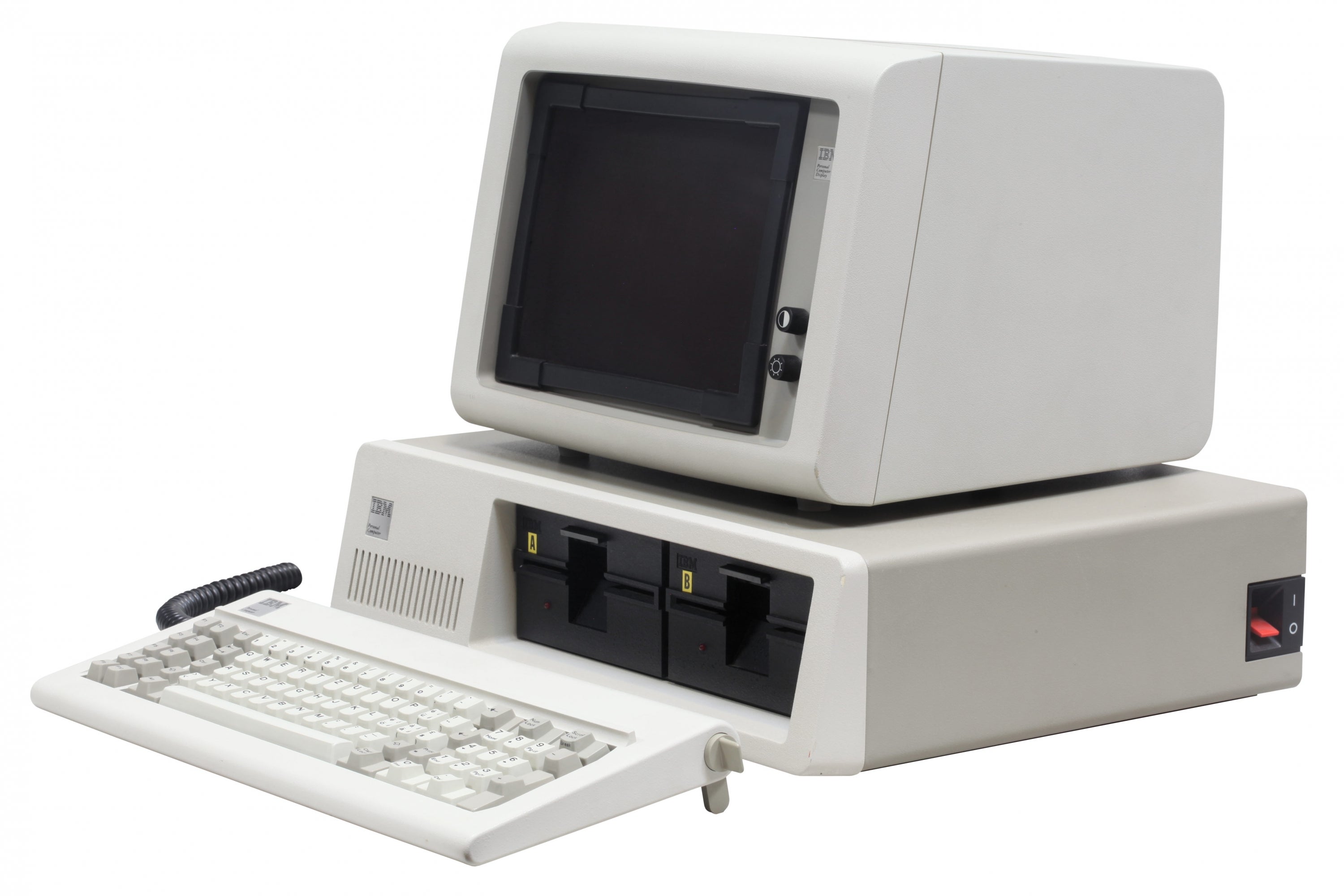(This post was meant to go out last Friday...)
August 12, 2016 is the 35th anniversary of the announcement of the IBM Personal Computer. Here's a few points to ponder as you celebrate the occasion:
1. Virtually anyone around the world using a desktop or laptop computer today has a connection to that machine's design. IBM engineers chose to use the 8-bit Intel 8088 microprocessor for the PC, which is a direct ancestor of the 64-bit x86 chips Intel sells today. This is another example of a hardware-compatible family of computer hardware, as with my post yesterday about the IBM System/360. While IBM was not alone in using the 8088, the vast success of the PC was overwhelmingly influential over the past 35 years.
2. IBM chose to use a likeness of Charlie Chaplin, aka "the Little Tramp", in its advertising for the PC. Ironically, Chaplin's character had famously satirized and opposed the efficiencies of modern industrialization and big business in the 1936, Depression-era film Modern Times. IBM, of course, was the unquestioned representative of big business throughout much of the 20th century. A non-trivial amount of this success can be traced to the Depression, a period when IBM's equipment-rental and punched-card business thrived and it consolidated its lead in the tabulating and office machine industry.
3. A 1973 predecessor of the IBM PC was an IBM prototype known as the Special Computer APL Machine Portable, or SCAMP (which rhymes with Tramp! hmmm...) Eventually produced as the IBM 5100, it was a portable computer the size of a suitcase with a built-in monitor, keyboard, and floppy drive. Although occasionally described as a "personal" computer, the $20,000 price tag kept it from the reach of hobbyists or even most business users.
4. There's a UW connection to the IBM PC, although it's somewhat murky and probably more wishful thinking than anything.
IBM authorized the crash development of the PC in the autumn of 1980. Around the same time, Mort Sinkoff, an IBM 5100 specialist who may already have been involved in the IBM PC, was visiting UW and noticed a small microprocessor-based system under development in the university's Computer Systems Group. With what amounted to a keyboard, monitor, and built-in BASIC language processor, this system would seem to meet many of the key characteristics of a personal computer of the era. Sinkoff was impressed with the design and offered to buy one, but that particular system was being built under contract to Volker-Craig, a Waterloo-based manufacturer of computer terminals. So, the UW team decided to build a second model to sell to IBM, which was delivered in December 1980; the IBM PC design wasn't finalized until spring 1981.
Is it possible that the Waterloo computer, known as the MicroWAT,
influenced what would become the IBM PC? Maybe, maybe not. Each computer used completely different microprocessors (the MicroWAT had a Motorola 6809), the MicroWAT user interace was a semi-intelligent computer terminal whereas the the IBM PC had a completely dumb keyboard and monitor, and the PC was a stand-alone device with its own floppy drive while the MicroWAT relied on a connection to a minicomputer for secondary storage. Ultimately, less than a hundred MicroWATs were ever made; at the peak, IBM was selling more than 200,000 PCs a month.
A number of UW spin-offs did find success selling software for the IBM PC, including Watcom, MKS, Maplesoft, and OpenText but that's a story for another day.
